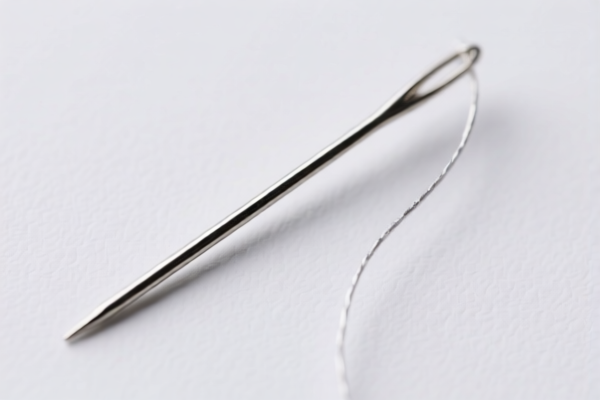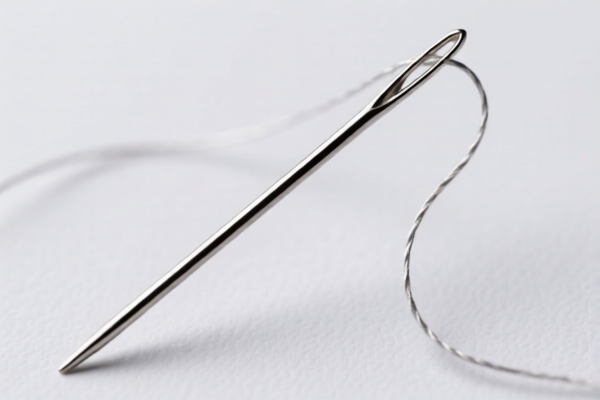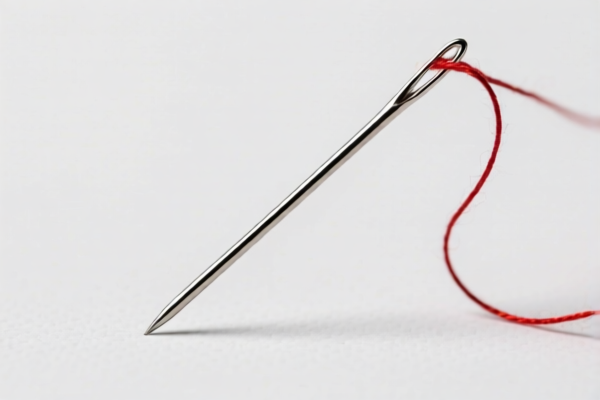| HS Code | Official Doc | Tariff Rate | Origin | Destination | Effective Date |
|---|---|---|---|---|---|
| 8203103000 | Doc | 30.0% | CN | US | 2025-05-12 |
| 8203106000 | Doc | 55.0% | CN | US | 2025-05-12 |
| 8215995000 | Doc | 35.3% | CN | US | 2025-05-12 |
| 7319901000 | Doc | 62.5% | CN | US | 2025-05-12 |
| 7319909000 | Doc | 65.4% | CN | US | 2025-05-12 |




Iron Needle
An iron needle is a slender, pointed instrument historically and currently utilized in a variety of applications due to its magnetic properties and structural simplicity.
Material:
Primarily composed of iron, though alloys containing iron are also common. The specific iron content and alloy composition influence properties like hardness, flexibility, and corrosion resistance. Stainless steel, an iron alloy, is frequently used in modern needles to prevent rusting. Historically, wrought iron was a common material.
Purpose:
The fundamental purpose of an iron needle is to create a small, localized point for various tasks. These tasks broadly fall into two categories: fastening/sewing and magnetic applications.
Function:
- Fastening/Sewing: The pointed end penetrates fabrics or other materials, creating a pathway for thread to bind them together. The eye of the needle facilitates the passage of the thread.
- Magnetic Induction: Iron is a ferromagnetic material, meaning it readily becomes magnetized. A needle can be magnetized by stroking it with a stronger magnet, aligning its internal magnetic domains. This magnetization allows it to interact with magnetic fields.
Usage Scenarios:
- Sewing: The most common application, used with thread to join fabrics in clothing, upholstery, and crafts. Different needle types cater to various fabric weights and thread types.
- Compass Creation: A magnetized needle, freely suspended (e.g., on a pivot point or in water), aligns itself with the Earth's magnetic field, indicating direction. Historically crucial for navigation.
- Acupuncture & Traditional Medicine: Thin iron needles are used in traditional Chinese medicine for stimulating specific points on the body. (Note: Modern acupuncture often utilizes stainless steel needles).
- Electrostatic Experiments: Iron needles can be used to demonstrate electrostatic forces.
- Geological Surveys: In some specialized applications, magnetized needles can be used to detect magnetic anomalies in the Earth’s crust.
- Toys and Novelties: Used in floating compass toys or as components in magnetic art projects.
Common Types:
- Sewing Needles: Categorized by size (number), point shape (sharp, ballpoint, tapestry), and eye shape (standard, self-threading). Variations exist for hand sewing, machine sewing, and specific fabric types (e.g., denim, leather, silk).
- Magnetized Compass Needles: Typically lightweight and balanced for free rotation, often with one end marked for direction.
- Acupuncture Needles: Extremely thin, sterile needles designed for insertion into specific acupoints.
- Watchmaker's Needles: Small, precision needles used for assembling and repairing watches.
- Knitting Needles (though often steel or other alloys): While not always iron, some older knitting needles were made of iron.
Iron needles fall under the category of sewing needles, knitting needles, bodkins, crochet hooks, embroidery stilettos and similar articles for use in the hand, of iron or steel. Based on the provided information, the following HS codes are relevant:
-
7319901000: This HS code covers Sewing needles, knitting needles, bodkins, crochet hooks, embroidery stilettos and similar articles for use in the hand, of iron or steel; safety pins and other pins of iron or steel, not elsewhere specified or included: Other: Sewing, darning or embroidery needles.
- 73: Chapter 73 pertains to articles of iron or steel.
- 19: Heading 19 specifically covers needles, knitting, crochet, embroidery and similar articles.
- 90: Subheading 90 further defines this as other articles not elsewhere specified or included, specifically sewing, darning or embroidery needles.
- Tax Rate: The base tariff is 0.0%, with an additional tariff of 7.5%. After April 2, 2025, the additional tariff increases to 30%, and a 25% additional tariff applies to steel and aluminum products, resulting in a total tariff of 62.5%.
-
7319909000: This HS code covers Sewing needles, knitting needles, bodkins, crochet hooks, embroidery stilettos and similar articles for use in the hand, of iron or steel; safety pins and other pins of iron or steel, not elsewhere specified or included: Other: Other.
- 73: Chapter 73 pertains to articles of iron or steel.
- 19: Heading 19 specifically covers needles, knitting, crochet, embroidery and similar articles.
- 90: Subheading 90 further defines this as other articles not elsewhere specified or included, specifically other articles.
- Tax Rate: The base tariff is 2.9%, with an additional tariff of 7.5%. After April 2, 2025, the additional tariff increases to 30%, and a 25% additional tariff applies to steel and aluminum products, resulting in a total tariff of 65.4%.
Regarding HS codes 7319901000 and 7319909000, please note the 25% additional tariff applicable to steel and aluminum products after April 2, 2025. It is important to verify the material composition of the iron needle to determine the correct tariff application.
Customer Reviews
No reviews yet.